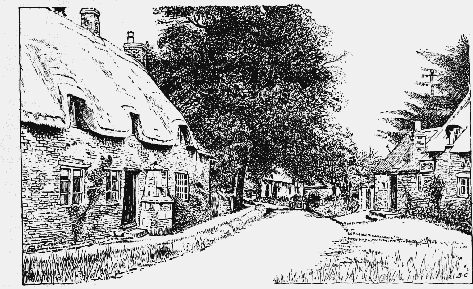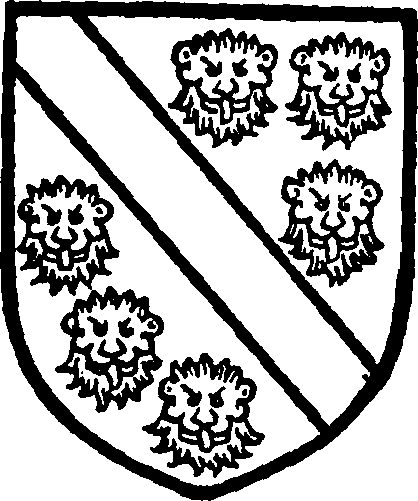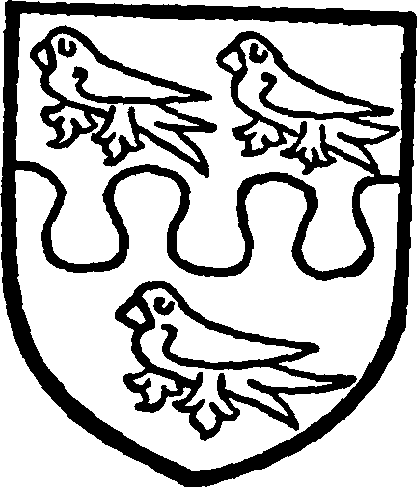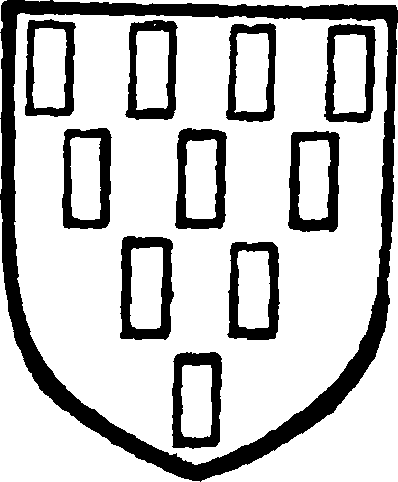A History of the County of Rutland: Volume 2. Originally published by Victoria County History, London, 1935.
This free content was digitised by double rekeying. All rights reserved.
'Parishes: Lyndon', in A History of the County of Rutland: Volume 2, ed. William Page (London, 1935), British History Online https://prod.british-history.ac.uk/vch/rutland/vol2/pp72-77 [accessed 23 April 2025].
'Parishes: Lyndon', in A History of the County of Rutland: Volume 2. Edited by William Page (London, 1935), British History Online, accessed April 23, 2025, https://prod.british-history.ac.uk/vch/rutland/vol2/pp72-77.
"Parishes: Lyndon". A History of the County of Rutland: Volume 2. Ed. William Page (London, 1935), British History Online. Web. 23 April 2025. https://prod.british-history.ac.uk/vch/rutland/vol2/pp72-77.
In this section
LYNDON
Lindon (xii–xviii cent.); Lyndon (xiii cent. onwards); Lindune (xiii cent.); Linden (xvi-xviii cent.).
The parish of Lyndon covers an area of 911 acres, and the population in 1921 was 103, the only parish in the division that showed an increase over the 1911 return. The land falls from between 400 ft. to 350 ft. along the road from Manton to Edith Weston, forming the northern boundary of the parish, to about 200 ft. along the river Chater, which forms the southern boundary. The subsoil is Upper Lias and Inferior Oolite; the surface soil varies. In digging a trench in 1780 to lay a drain talc was found in the stiff blue clay, (fn. 1) and there are ancient stone pits. (fn. 2)
Lyndon lies in the by-road from Pilton to Manton. It is a typical Rutland village, with large farm-houses and thatched cottages picturesquely situated on the northern slope of the Chater Valley. The older houses near the church are of stone with stone or thatched roofs, but near the Rectory, in the southern part of the village, are several brick houses. The Village Hall was built in memory of Ernest William Proby Conant, lord of the manor, who died in 1920.

Lyndon: Old Cottages
Lyndon Hall, the seat of Capt. R. J. E. Conant, M.P., which stands south of the church on the west side of the village, was begun in 1665 and completed in 1675 by Sir Abel and Thomas Barker, (fn. 3) but considerable additions were made on the west side, and a porch erected on the north, about 1867. Except for these additions, the house remains as when first erected, and is an excellent example of the transition between the Jacobean and the more pure classic style of architecture which was then being gradually adopted. It is a rectangular two-story building, faced with ashlar, without wings or projections, the corners emphasised by quoins, and with tall two-light windows of the older type with mullions and transoms. The stone-slated hipped roof has widely projecting coved eaves, but is without gables or pediment, its slopes being broken by small dormers. The windows have moulded architraves, and the middle one on each side on the upper floor, with the doorway below it, has distinguishing architectural embellishments. The north, east and south fronts, which are symmetrical and of uniform design, are of much simple dignity, depending for their effect upon the proper relation of the several parts to one another and the use of refined detail.
Some distance to the north of the Hall, on high ground, is the Top Hall, a rather smaller building of the same general character, but plainer in detail, said to have been erected about ten years earlier. (fn. 4) The walling is of ashlar, but without quoins at the angles or architraves to the windows. The longer sides face east and west, and there are modern additions on the north side, where the entrance now is; the former entrance doorway on the east side, opposite which are tall gate piers surmounted by balls, is now blocked. Two of the rooms on the ground floor are panelled and there is a good oak staircase with turned balusters. A portion of the older 17th-century house, with gabled roof, remains at the north-west corner.
The nearest railway station is Manton, 2½ miles west, on the Syston and Peterborough branch of the London Midland and Scottish railway. Oakham is 5 miles to the north-west, Uppingham 6 miles southwest.
In disputes in 1621–5 about inclosures in the late 16th century the close called 'Breach' is mentioned. (fn. 5)
The Barker family was represented by some distinguished members. (fn. 6) Samuel Barker the Hebraist married the daughter of the famous though unorthodox divine William Whiston, who died at Lyndon Hall and was buried at Lyndon. (fn. 7) Their son Thomas married Ann, sister of Gilbert White of Selborne, (fn. 8) in whose works Lyndon is often mentioned.
Manor
It is probable that LYNDON, not separately mentioned in 1086, was at that time one of the seven berewicks of Hambleton (q.v.) and therefore royal demesne. It must have been granted by the Conqueror to the first Earl of Warwick, and he subinfeoffed the Montforts, who appear as mesne lords of most of the Warwick lands in Rutland. (fn. 9)
From 1250 until the 15th century the Warwick overlordship and the Montfort mesne lordship are recorded. (fn. 10)
The undertenants probably from at least 1086 were the local family of Lyndon, sometimes also called 'of Easton' (co. Northants). Roland de Lyndon was lord of Easton in 1086 (fn. 11) and his son Simon succeeded. (fn. 12) He mortgaged his lands after 1130 to Robert, 'nepos of the bishop,' (fn. 13) grandfather of William de Humez, Constable of Normandy. In 1167 Roland son of Simon was lord of Lyndon, (fn. 14) and Simon, (fn. 15) presumably his son, married before 1194 Margaret, daughter of William de Otteringham. William de Humez held the land at Easton, which in 1204 was claimed by Simon de Lyndon, grandson of the above Simon. (fn. 16) Through the loss of Normandy, William de Humez's connexion with England was severed, and Simon was allowed to have his land on payment of 300 marks. (fn. 16) Simon de Lyndon died before 1217, when the custody of his lands was given to Bartholomew Pecche, and later to the Bishop of Salisbury. (fn. 17) Simon left three sons. Roland, apparently the eldest, went to the Holy Land, and was reported dead in 1221–2, when William de Cantilupe, who had the custody of Peter de Montfort, the overlord, seized the manor of Lyndon. (fn. 18) In 1227 the Bishop received a renewal of the custody of Simon's land and heirs with their marriage. (fn. 19) Alan, the second son, held Easton, (fn. 20) Little Casterton and Lyndon, and presented to Lyndon church after the reported death of his brother. (fn. 21) Roland, however, returned with two other pilgrims in 1231; they received hospitality from Alan in that year and were never seen again. A body was found in the river near Stamford and identified by various acquaintances, including his sister Alina and his 'amica' Emma (by whom he had a son), as that of Roland. Grave suspicion fell on Alan, (fn. 22) but he was holding Easton, Lyndon and Little Casterton in 1236 and died in or before 1239. He was a clerk, probably in minor orders, as he had a wife Maud who survived him. (fn. 23) Richard, brother of Roland and Alan, also a clerk, succeeded, (fn. 24) and died about 1255 and was buried at Easton. (fn. 25) His son and heir Simon (fn. 26) paid 80 marks in 1277 for two knights' fees. (fn. 27) As Sir Simon de Lyndon, kt., he demised the manors of Lyndon and Little Casterton (q.v.) to Master Henry Sampson, who in 1285 released his right to the king and queen, (fn. 28) to whom Simon also conveyed them. (fn. 29) Lyndon was in the possession of the Crown in 1285–7 (fn. 30) and was assigned to Queen Eleanor (d. 1291), and she demised it to John de Boghton of Northampton. In 1290, however, it was granted as dower to Joan widow of Sir Simon de Lyndon. (fn. 31) Joan possibly married Simon de Wappelade, who was returned in 1305 as tenant of the knight's fee here. (fn. 32) The manor was held by Joan until her death in 1310, when it reverted to Edward II, who retained it until 1311. He then granted it to Ingelard de Warley, keeper of his wardrobe. Ingelard demised it to Reynold his brother, and they or their farmers were in possession until 1315, (fn. 33) in spite of the revocation of the grant by the Lords Ordainers. (fn. 34) In 1315 and 1316 the manor and advowson were both in the king's hands. (fn. 35) The manor was leased during pleasure in the latter year to Edmund de Kendale; and in the following March he received a grant for 6 years, quit of rent, for his sustenance during a pilgrimage to the Holy Land. (fn. 36) Edward III on his accession confirmed Edmund's custody of the land in Lyndon that he held by grant of Edward II; (fn. 37) but Edmund, it seems, failed to pay the farm (fn. 38) and was deprived, and the estate was granted for life to John de Montgomery, King's Yeoman and Usher of the Chamber. (fn. 39) In 1335 Montgomery obtained a confirmation of the grant to him for life of the manor and advowson, (fn. 40) and in the same year a grant, apparently in reversion, was made to Robert de Corby and Joan his wife and the heirs of Robert for good services to the queen mother and in exchange for lands in Kent. (fn. 41) In 1348, after the death of John, the manor was granted for life to Hugh de Montgomery, apparently by error, which grant was surrendered. The manor and advowson were thereupon again granted to Robert de Corby in fee in 1348. (fn. 42) Robert de Corby in 1358 obtained licence to enfeoff Roland Daneys; (fn. 43) and Robert and Joan his wife made the conveyance in the same year. (fn. 44) This manor and advowson then descended (fn. 45) with the Daneys' manor of Tickencote (q.v.) until 1433, (fn. 46) when John Daneys died seised of both manors, leaving Robert his son and heir. Robert died seised of the Lyndon estate and it passed to his younger sister and co-heir Elizabeth. (fn. 47) She married William Hasylden, who survived her and died seised in her right in 1480, when their son John succeeded. (fn. 48) Francis son and heir of John Hasylden received licence of entry in 1509. (fn. 49) His daughter Frances and her husband Robert Peyton had livery in 1522 and made a settlement of the manor and advowson in 1535 with reversion to the right heirs of Frances. (fn. 50) In 1553 Frances as the widow of Robert Peyton, kt., with Robert her eldest son and his brothers, conveyed the manor and advowson to John Hunt, his heirs and assigns. (fn. 51) John Hunt of Lyndon who received a grant of arms in 1585 (fn. 52) died seised of this estate in the following year, leaving a son and heir Remige or Remigius, to whom he had bequeathed the manor in tail male, leaving the advowson to his son Thomas. (fn. 53)

Hunt of Lyndon. Azure a bend between six leopards' heads or.

Barker of Hambleton. Party fessewise and nebuly sable and or, with three martlets countercoloured.
Remige made a settlement in 1617 of both manor and advowson (fn. 54) and died seised in 1618, leaving two sons, Thomas and Francis. Thomas (fn. 55) died seised in 1624 leaving a widow Ann and three sons, Edward his heir, Thomas and John. (fn. 56) Edward, with his wife Elizabeth and his mother and brothers, (fn. 57) conveyed the manor in 1634 to feoffees for Valentine Saunders of Chiswick. His grandson Valentine was sequestrated in 1646 for delinquency, into which condition he claimed to have been 'inveigled' in 1642, at the age of 17. (fn. 59) He married Ann, sister of Sir Francis Mannock, and settled the property in 1649 and 1652, (fn. 60) and in 1654 sold it to Hugh Audley, (fn. 61) by whom it was sold in 1662 (fn. 62) to Abel Barker of Hambleton (q.v.). Abel Barker made a settlement of the manor and advowson in 1665. (fn. 63) The Hambleton family was becoming enriched by their wool trade. The Abel who purchased Lyndon was son of another Abel Barker of Hambleton. Abel the son was created a baronet in 1665, (fn. 64) and had been sheriff of Rutland in 1646–7, M.P. in 1656–8, and again in 1679, the year of his death. His accounts show that he continued to carry on a successful business as a grazier, (fn. 65) and built a large house at Lyndon, (fn. 66) into which he moved shortly before his death. His son and successor Sir Thomas, sheriff of the county 1670–1 and 1680–1, died childless and was buried at Lyndon 1707. By his death the title became extinct and the estates devolved on the descendant of his great-uncle, Samuel Barker of North Luffenham. (fn. 67) Samuel Barker, 'the Hebraist,' came to live at Lyndon, and in 1752 his father-in-law, the celebrated divine William Whiston, died at Lyndon House. (fn. 68) Thomas, son and heir of the Hebraist, married Ann, sister of Gilbert White of Selborne, and was himself noted for his scientific writings. His observations, made at Lyndon during 58 years, related chiefly to natural history and meteorology, and were regularly published in 'Philosophical Transactions' of the Royal Society. He died at Lyndon, his birthplace, in 1809, at the age of 87. (fn. 69) His son Samuel, a frequent correspondent of his uncle, Gilbert White, (fn. 70) died in 1835 and was succeeded by his daughters and co-heirs Mary and Ann Barker, who died in 1843 and 1846 respectively. (fn. 71) In accordance with their will the estate was purchased by their cousin, the Rev. Edward Brown in 1846. (fn. 72) He died in 1862 and was succeeded by his nephew Edward Nathaniel Conant, son of his sister Catherine, who had married in 1817 John Edward Conant, son of Sir Nathaniel Conant, kt., and Sarah daughter of John Whiston. Edward Nathaniel Conant was sheriff in 1867, and died in 1901, leaving a son Ernest William Proby Conant, who was succeeded in 1920 by his son Capt. Roger John Edward Conant, (fn. 73) now lord of the manor and patron of the living.

Conant of Lyndon. Gules ten billets or.
With the conveyance of the manor in Jan. 1552–3, and subsequently, there passed view of frankpledge; and free warren, courts leet and baron were mentioned in 1742. (fn. 74)
The garden of the manor, with its trees, is mentioned early in the 14th century. (fn. 75) In 1315 Edmund de Kendale was allowed 4 oaks to repair the houses. (fn. 76) The dovecote was in a ruinous condition in 1361. (fn. 77) A capital messuage passed with the manor in the early 17th century, and a windmill then and subsequently.
Church
The church of ST. MARTIN stands within the Hall grounds, and consists of chancel 20 ft. by 14 ft., with north vestry and organ-chamber, clearstoried nave of two bays 32 ft. by 12 ft. 3 in., north aisle 7 ft. 6 in. wide, south aisle 5 ft. 6 in. wide, south porch, and west tower 7 ft. square, all these measurements being internal. The width across nave and aisles is 29 ft. 6 in.
The building underwent a very extensive restoration in 1866, (fn. 78) and few original architectural features remain. The walls have been much rebuilt or refaced and, except in the tower, all the windows are new. The font is a relic of a 12th-century church, recovered at the restoration, but the earliest part of the present structure is the plain 13th-century south doorway, with pointed arch of a single chamfered order, with moulded imposts and hood with head-stops. Part of a wheel gable-cross with simple cheveron ornament, now preserved in the porch, may be of the same period, though apparently rather earlier. The church, however, seems to have been almost completely rebuilt at the end of the 13th or early in the 14th century, to which period the existing nave arcades belong, and the tower and clearstory are only slightly later, the building assuming its present form in the 14th century. The narrower south aisle is apparently that of the early 13th-century church, the north aisle having probably been added, or a former one widened in the later rebuilding. The upper part of the tower was rebuilt or remodelled in the 15th century. The organchamber and vestry are modern.
The building throughout is of rubble and is without buttresses in any part. The roofs of the chancel, vestry and porch are covered with stone slates, but those of the nave and aisles are leaded. There are plain parapets to the nave. Internally all the walls are plastered; the roofs are modern.
The chancel has a three-light east window and in the south wall a modern doorway and a window of two lights, all in the style of the 14th century. On the north side a modern cusped arch opens to the organchamber and vestry. No ancient ritual arrangements remain. There is a marble reredos, erected in 1866, with extensions along the wall on either side. (fn. 79) The early 14th-century chancel arch is of two chamfered orders with hood-mould towards the nave, the inner order resting on half-octagonal responds with moulded capitals. The rood-loft doorway and the top steps of the staircase remain on the north side at the east end of the nave wall.
The nave arcades are apparently of equal date, but vary somewhat in detail. The arches on each side are of two chamfered orders, with hood-mould towards the nave, springing from an octagonal pillar and halfoctagonal responds with moulded capitals and bases. (fn. 80) The stops of the hood-moulds vary in character, one on the south side being a combination of tooth and ballflower ornament. In the middle of the blank east wall of the south aisle is an image bracket, and an arched opening in the corresponding position in the north aisle is apparently an old window with mullions and tracery removed. The aisles (fn. 81) have pointed three-light windows north and south, and a two-light window at the west end, all in the style of the 14th century. There are three two-light clearstory windows on each side in the same style, the hood-moulds alone being old. The roof is of low pitch, with large gargoyles. The porch is modern, with timber gable and square-headed doorway with masonry jambs.
The tower is of three stages marked by strings, with moulded plinth and battlemented parapet. There is no vice. The 14th-century west window is of two trefoiled lights with quatrefoil in the head, the hoodmould having a face at the apex, but no end stops, and there is a modern doorway on the south side. Except for an oblong opening on the west side, the middle stage is blank. The tall pointed 15th-century bellchamber windows have transoms and are of two trefoiled lights with hood-moulds. Internally the tower opens into the nave by a narrow pointed arch of two chamfered orders, the inner order springing from moulded corbels, the outer continuous.
The font now used was found buried in the churchyard in 1866. It is of 12th-century date, in the form of a capital, square at the top and circular below, the angles and each face of the upper part somewhat rudely carved with scrolled undulating and other ornament, and animals of archaic character on two of the sides. The bowl rests on modern supports. A discarded 18th-century baluster font is now in the churchyard.
The marble pulpit, in form like a north ambo, dates from 1856. The fittings are all modern. (fn. 82)
Under the tower is a much-defaced 13th-century coffin lid, and in the vestry a Jacobean altar table. There are also a Jacobean chair and a chest, and in the south aisle is a War Memorial tablet of oak (1914–18).
On the east jamb of the south doorway is a scratch dial.
There are four bells, the first and second by Taylor and Co. of Loughborough, 1889; the third dated 1716, and the tenor undated, but cast early in the 18th century. (fn. 83)
The plate consists of a cup and cover paten of 1632–3 with maker's mark D.T., a flagon of 1768–9 and an almsdish of 1693–4. (fn. 84)
The registers before 1812 are as follows: (i) all entries 1580–1710; (ii) baptisms 1710–1813; (iii) marriages 1718–48, burials 1711—1813; (iv) marriages, 1757–1813.
There is the base of a churchyard cross south of the porch, and in the west wall of the churchyard are a number of headstones to members of the family of Barker and others, including the Rev. William Whiston, (fn. 85) the translator of Josephus, who died 22 August 1752.
The archdeacons' visitations of the 17th century show the condition of the church to have been bad. In 1605 there was no decent pulpit, the church was unpaved 'and the rain cometh in most intollerablie,' there was no 'pewter stoope pot for the communion,' there was 'a chapel on the south side of the church which is very much in decay and annoyeth the chauncell very much and the repair thereof belongeth to Mr Hunt,' the churchyard fence was in decay so that hogs 'do root up the churchyard.' In 1619 'the stoope pot' for the communion was like an alehouse quart, the register book was not subscribed according to the Canons, the aisle northward was wholly down in the roof. In 1640 the chapel on the south side of the church had become utterly ruinous and the cross in the churchyard was also ruinous and there was no paten. In 1681 the churchwardens were ordered to set up the Ten Commandments, the Creed and the Lord's Prayer, and buy a new Erasmus' Paraphrase, a Book of Canons, Bishop Jewell, a Book of Homilies, and a Table of Marriages. (fn. 86)
Advowson
The advowson has descended with the manor (q.v.) (fn. 87) since the first mention of it is found early in the 13th century. (fn. 88) Capt. Roger John Edward Conant is the present patron. The living is a rectory.
Distinguished incumbents have been Thomas Hutchinson, scholar, rector 1731–48, (fn. 89) and Thomas Kerchever Arnold, rector 1830–53, who was able to devote much leisure to writing educational works, having only 100 parishioners. (fn. 90)
Charities
Sir Thomas Barker, by his will dated 13 December 1704, devised as follows: 'I do give and bequeath to the poor of Lyndon aforesaid £5 a year for ever, which together with £3 a year given by my brother Christopher Dighton, in all £8 per annum, I do charge upon and shall be secured and paid out of the close called the Holme Close in Lyndon aforesaid, quarterly from my death free from taxes or any other charge whatsoever, the same to be distributed on such times and in such manner as the Lord of the manor and rector of the church of Lyndon aforesaid for the time being shall think best for the use and benefit of the said poor.' The rent-charge is received from Capt. R. J. E. Conant, owner of the Holme Close, and is distributed by him, as lord of the manor, and the rector among the poor.